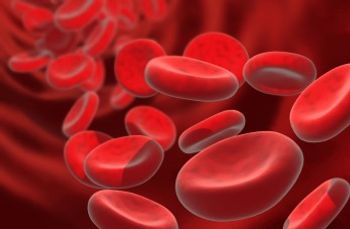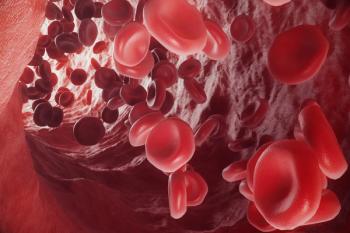
FDA Accepts PMA Application for TTFields in Non–Small Cell Lung Cancer
Data from the phase 3 LUNAR trial support the use of tumor treating fields in patients with non–small cell lung cancer.
The FDA has accepted a premarket approval (PMA) application for tumor treating fields (TTFields) for non–small cell lung cancer (NSCLC) that has progressed during or following platinum-based therapy, according to a press release from Novocure.1
The application includes findings from the phase 3 LUNAR trial (NCT02973789). A regulatory decision for TTFields in this indication is expected in the second half of 2024.
“We are thrilled to announce the FDA has accepted our PMA application for review of the LUNAR data in NSCLC,” Asaf Danziger, chief executive officer at Novocure, said in the press release. “This significant milestone brings us one step closer to treating patients seeking treatment for NSCLC, post-platinum, for which very few effective non-toxic options exist today.”
Data from the phase 3 LUNAR study that were published in the Journal of Clinical Oncology indicated that overall survival (OS) was significantly prolonged in the TTFields plus standard of care (SOC) arm compared with SOC alone. Investigators reported a median OS of 13.2 months (95% CI, 10.3-15.5) in the TTFields arm compared with 10.0 months (95% CI, 8.2-12.2) in the SOC cohort at a minimum follow-up of 12 months (HR, 0.74; 95% CI, 0.56-0.98; P = .037).2 Additionally, the 1-year OS rates in each respective arm were 53% (95% CI, 44%-61%) vs 42% (95% CI, 34%-50%; P = .040).
In a subgroup of patients receiving an immune checkpoint inhibitor (n = 134), the median OS in the TTFields arm was 18.5 months (95% CI, 10.6-30.3) vs 10.6 months (95% CI, 8.2-17.6) in the SOC arm (HR, 0.63; 95% CI, 0.41-0.96; P = .032). Among patients in the docetaxel subgroup (n = 142), the median OS in each respective arm was 11.1 months (95% CI, 8.2-14.1) compared with 8.9 months (95% CI, 6.5-12.2; HR, 0.87; 95% CI, 0.60-1.26).
The study included patients diagnosed with metastatic NSCLC who had progressed during or following platinum-based therapy and an ECOG performance status of 0 to 2. TTFields were administered at 150 kHz continuously until progression or intolerable toxicity. The study’s primary end point was OS, with key secondary end points including progression-free survival (PFS) and adverse effects (AEs).
Investigators included a total of 276 patients, 137 of whom were randomly assigned to the TTFields arm and 139 to the SOC from February 2017 to November 2021. The median patient age was 64 years (range, 22-86). Additionally, most patients were male (65%), had nonsquamous histology (56%), an ECOG performance status of 0 or 1 (96%), and received 1 previous line of therapy (89%).
In terms of other findings, the median PFS was 4.8 months (95% CI, 4.1-5.7) in the TTFields arm vs 4.1 months (95% CI, 3.0-4.7) in the SOC arm (HR, 0.87; 95% CI, 0.67-1.14).
A total of 71% of patients in the TTFields arm experienced treatment-related AEs, the most common of which was grade 1/2 local skin irritation. Six percent of patients reported grade 3 AEs, and there were no reports of grade 4 toxicities or death related to treatment with TTFields.
References
- Novocure announces FDA acceptance of the PMA application for TTFields therapy in non-small cell lung cancer. News release. Novocure. January 18, 2024. Accessed January 18, 2024. http://tinyurl.com/34x673yb
- Leal T, Kotecha R, Ramlau R, et al. Tumor Treating Field (TTFields) therapy with standard of care (SOC) in metastatic non-small cell lung cancer (mNSCLC) following platinum failure: randomized, phase 3 LUNAR study. J Clin Oncol. 2023;41(17):LBA9005. doi:10.1200/JCO.2023.41.17_suppl.LBA9005
Newsletter
Stay up to date on recent advances in the multidisciplinary approach to cancer.


















































































